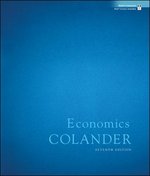Question
High Inflation was rampant on Argentina from 1977 to 1991. In January, 1977, a factory worker living in Buenos Aires could have purchased a container
High Inflation was rampant on Argentina from 1977 to 1991. In January, 1977, a factory worker living in Buenos Aires could have purchased a container of milk at a local supermarket for 1 peso. Returning to the supermarket fourteen years later, the worker would now have to pay over 1 billion pesos for a similar container. Of course, it was not just the price of milk that rose so dramatically. Since 1977, the Consumer Price Index rose at an average annual rate of 333% per year. There was a twelve month period ending in 1990 during which actual inflation was 20,266%. In an economy, such as Argentina from 1977 - 1991, with high inflation, prices respond immediately to any type of shock. Under a flexible exchange rate regime, using the AA-DD framework for the Argentina's economy, analyze the short run and long run effects of a permanent increase in money supply during that period of high inflation. Does the short run exchange rate overshoot the long run exchange rate?
Step by Step Solution
There are 3 Steps involved in it
Step: 1

Get Instant Access to Expert-Tailored Solutions
See step-by-step solutions with expert insights and AI powered tools for academic success
Step: 2

Step: 3

Ace Your Homework with AI
Get the answers you need in no time with our AI-driven, step-by-step assistance
Get Started


